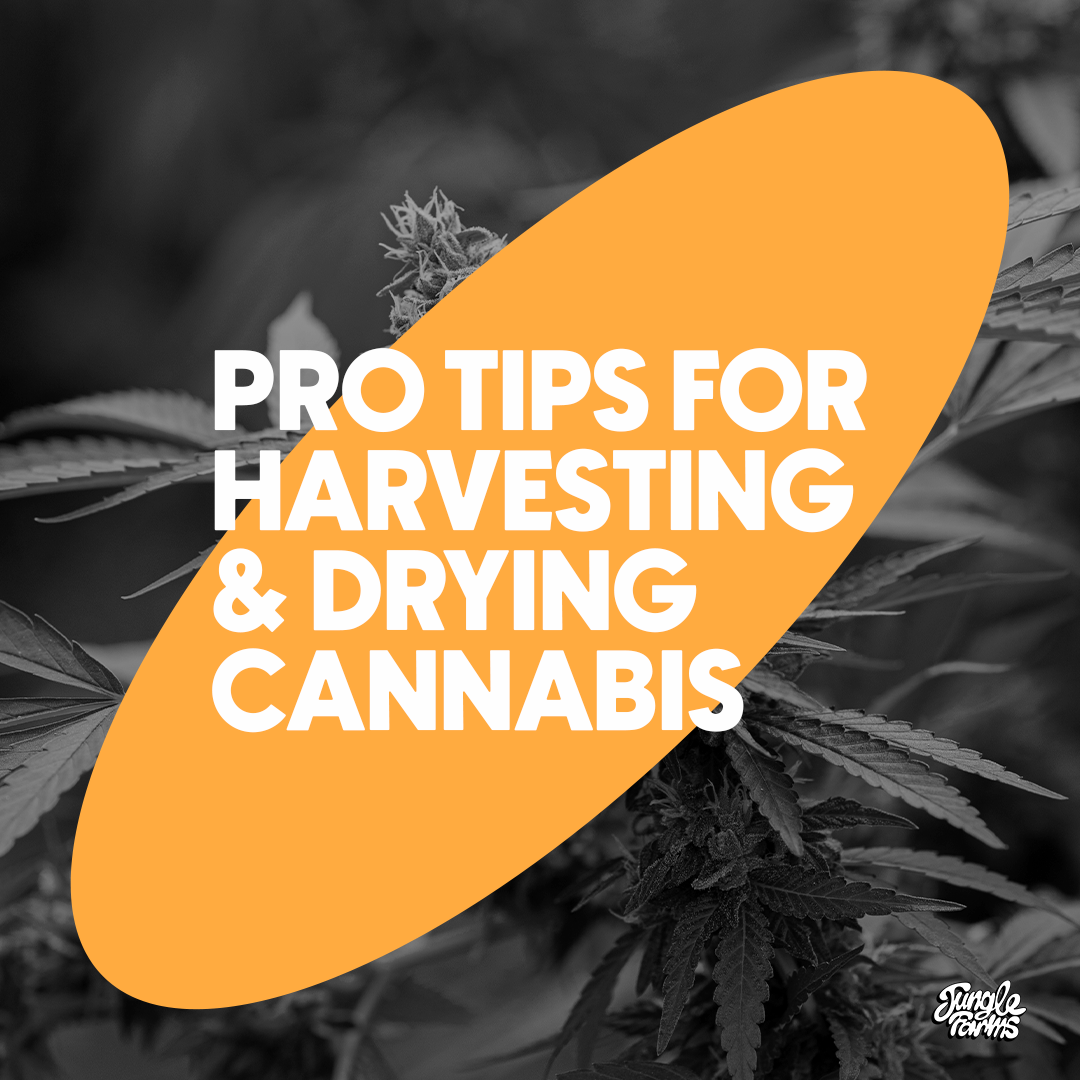As the cannabis industry continues to grow worldwide, Phuket has emerged as a significant player in cannabis cultivation. Phuket offers a unique environment for producing high-quality cannabis. In this blog, we will delve into the essential steps and techniques necessary for harvesting and drying cannabis plants effectively in Phuket, backed by reputable sources and industry expertise.
According to research conducted by the Royal Project Foundation, Thailand’s warm and tropical climate, including regions like Phuket, provides ideal conditions for cannabis cultivation. However, harvesting and drying cannabis requires careful attention to detail to maximize the potency, flavor, and overall quality of the final product.
To provide location-specific insights, we will address the unique considerations of Phuket’s tropical climate and its impact on outdoor and indoor cannabis cultivation. We will also tackle challenges related to managing humidity levels during drying in Phuket’s humid environment, drawing upon industry expertise and research conducted by the Thailand Institute of Scientific and Technological Research.
Join us on this journey as we unlock the secrets to successful cannabis cultivation in Phuket, Thailand. By implementing the techniques and tips shared in this guide, you can optimize your cannabis harvest and drying process to achieve exceptional results.
Understanding the Harvesting Process
To achieve a successful cannabis harvest in Phuket, Thailand, it is crucial to understand the intricacies of the harvesting process.
Determining the Right Time to Harvest: Observing Trichome Development and Pistil Color
Observing trichome development and pistil color is fundamental in determining the optimal time to harvest cannabis plants. Trichomes, the resinous glands on the buds and leaves, play a vital role in producing cannabinoids, including THC and CBD. Monitoring trichomes allows growers to gauge the plant’s maturity and potency. As the plants near harvest, trichomes change color from clear to milky white, and finally to amber. For those seeking higher THC levels, harvesting during the milky white stage is recommended. However, if a more balanced CBD-to-THC ratio is desired, waiting until the trichomes turn amber is advised.
In addition to trichomes, monitoring pistil color can provide valuable insights into the plant’s readiness for harvest. Pistils are the small, hair-like structures on the flowers. During the flowering phase, pistils are vibrant and white. As harvest approaches, they gradually darken and change to a reddish-brown or orange hue [2]. This color change indicates that the plant has reached an advanced stage of maturation.
Proper Tools and Techniques for Harvesting Cannabis Buds
Having the right tools and employing proper techniques are essential for a successful harvest. To minimize damage to the plant and preserve its trichomes, using sharp, sterilized pruning shears or scissors is crucial. Clean cutting tools prevent the introduction of contaminants and potential infections that could negatively impact the final product.
When harvesting, it is advisable to remove entire branches or individual colas at a time, rather than picking off individual buds. This method ensures efficient and organized handling of the plant while minimizing unnecessary stress to the remaining foliage.
Trimming and Pruning Tips for Maximizing Yield and Quality
Trimming and pruning are vital steps to maximize both yield and quality. Trimming involves removing excess fan leaves, sugar leaves, and other non-essential foliage that can hinder the drying and curing process. Trimming also helps in enhancing the visual appeal and overall aesthetics of the final product.
Proper pruning techniques involve selectively removing specific branches or growth tips to improve light penetration, airflow, and nutrient distribution. This practice stimulates bud development in the remaining areas and can significantly increase overall yield. Remember, a gentle touch and attention to detail during trimming and pruning contribute to the preservation of valuable trichomes and terpenes, ultimately enhancing the potency and aroma of the harvested cannabis.
Essential Steps for Drying Cannabis
Properly drying cannabis is a critical step in achieving a high-quality final product.
Creating the Ideal Drying Environment: Temperature, Humidity, and Ventilation Factors
To create the ideal drying environment, it is crucial to consider temperature, humidity, and ventilation factors. Maintaining a temperature between 60-70°F (15-21°C) is generally recommended for drying cannabis [1]. This range helps preserve cannabinoids and terpenes while preventing mold growth. However, in the humid climate of Phuket, it may be necessary to lower humidity levels further.
Controlling humidity is essential during the drying process. Aim for a humidity level between 45-55% to prevent excessive moisture that can lead to mold and mildew. In humid regions like Phuket, dehumidifiers or moisture-absorbing products can aid in maintaining optimal humidity levels.
Proper air circulation and ventilation are also vital for an effective drying process. Ensure that the drying area has good airflow to prevent stagnant air and the formation of mold. Gentle fans can be used to promote air circulation, but be cautious not to create excessive airflow that can dry the buds too quickly.
Hanging and Curing Techniques to Promote Proper Drying
Hanging and curing are fundamental techniques for promoting proper drying and enhancing the overall quality of dried cannabis. After harvesting, carefully trim the excess leaves while leaving enough intact for protection during drying. Next, hang the trimmed branches upside down in a dark, well-ventilated area. This allows for slow and controlled drying while preserving the integrity of the buds.
During the curing process, the drying cannabis is stored in airtight containers like glass jars, which help maintain consistent moisture levels and promote further decomposition of chlorophyll, resulting in improved flavor and smoothness. Open the jars periodically to release any excess moisture and promote airflow, gradually extending the time between openings as the buds reach the desired moisture content.
Monitoring and Adjusting the Drying Process for Optimal Results
Regular monitoring and adjustment are key to achieving optimal drying results. Check the drying cannabis regularly for signs of excessive dryness or moisture retention. Buds should feel dry to the touch on the outside but retain a slight moisture inside. This is best determined through careful manual inspection and experience.
If the buds dry too quickly, consider increasing the humidity slightly or adjusting the drying environment to slow down the process. Conversely, if the drying process is too slow or moisture levels remain high, additional airflow or dehumidification measures may be necessary.
By following these essential steps, including creating the ideal drying environment, utilizing proper hanging and curing techniques, and monitoring and adjusting the drying process, you can ensure the optimal drying of cannabis in the humid climate of Phuket, Thailand.
Post-Harvest Care and Storage
Post-harvest care and storage play a crucial role in maintaining the quality and potency of dried cannabis buds.
Properly Storing Dried Cannabis Buds to Maintain Quality and Potency
Proper storage is vital to preserve the quality, flavor, and potency of dried cannabis buds over time. To maintain optimal conditions, store the dried buds in a cool, dark, and dry environment. Aim for a temperature between 60-68°F (15-20°C) and a humidity level of 55-62%. Excessive heat, light, and moisture can degrade cannabinoids and terpenes, compromising the overall quality of the buds.
Using airtight glass jars is highly recommended for storing dried cannabis. Glass jars help preserve freshness, protect against exposure to air and moisture, and prevent the loss of terpenes. Avoid plastic bags or containers as they can create static, cause moisture retention, and promote the growth of mold and mildew.
Factors to Consider When Packaging and Labeling Cannabis Products
When packaging and labeling cannabis products, several factors should be considered. Compliance with local regulations is crucial, including accurate product labeling, batch numbers, and any required warning symbols or disclaimers. Clearly labeling the strain, THC/CBD content, and the date of harvest is essential for both legal compliance and informing consumers about the product’s characteristics.
Additionally, using child-resistant packaging is necessary to ensure safety, especially if you plan to distribute or sell cannabis products. Child-resistant containers not only meet legal requirements but also protect against accidental consumption by children.
Long-Term Preservation and Aging Techniques for Specialty Strains
For specialty strains that benefit from long-term preservation and aging, additional techniques can be employed to enhance their flavors, aromas, and effects. One such technique is the use of humidity packs or “curing packs” designed to maintain a specific humidity level within the storage container. These packs help preserve the moisture content and prevent excessive dryness or moisture absorption.
Another method is “burping” the storage containers periodically to release any built-up gases and ensure proper airflow. This technique is especially beneficial during the early stages of storage when residual moisture and organic matter can produce gases that may affect the overall quality of the buds.
Aging cannabis in a controlled environment, such as a cool and dark cellar, can also result in unique flavor profiles and enhanced terpene development. This technique is similar to the aging process used for fine wines and allows for subtle changes in aroma, flavor, and potency over time.
Conclusion
By understanding the intricacies of determining the right time to harvest, utilizing proper tools and techniques for harvesting cannabis buds, and implementing effective trimming and pruning practices, you can optimize your yield and quality.
Remember, for specialty strains, the journey doesn’t end with drying and storage. Through long-term preservation and aging techniques, you have the opportunity to unlock unique flavor profiles and enhance terpene development over time, akin to the aging process of fine wines.
Now armed with this knowledge, you can confidently embark on your cannabis cultivation journey in Phuket, Thailand. As you implement these techniques, continue to stay informed about industry developments and regulations to ensure ongoing success.
Remember to consult reputable sources and local regulations as you embark on your cannabis cultivation journey. Good luck, and may your cannabis harvests in Phuket, Thailand be abundant and extraordinary!

